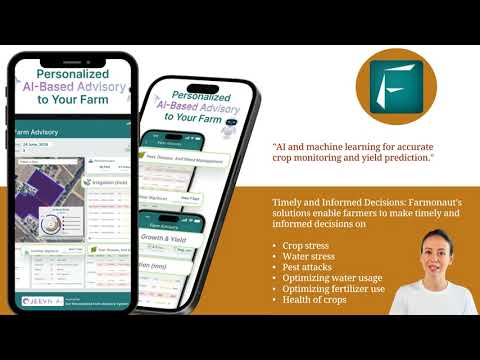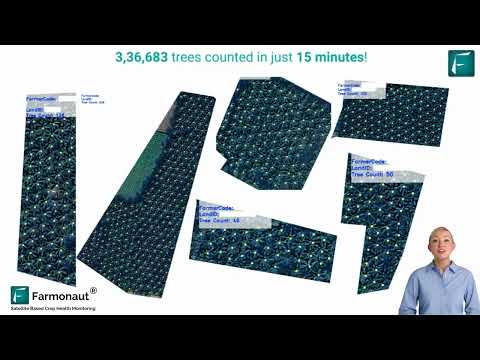Revolutionizing Mortgage Industry: Digital Innovation and Automation Insights from Cleveland’s Top Webcast
“Cleveland’s top webcast reveals 80% of mortgage lenders are adopting digital tools to enhance borrower experiences.”
Welcome to our comprehensive analysis of the latest insights from Cleveland’s premier mortgage industry webcast, The Big Picture. In this blog post, we’ll dive deep into the evolving landscape of mortgage technology, exploring how digital innovation and automation are reshaping the lending practices of banks, credit unions, and independent brokers across the United States.
As we navigate through the rapidly changing world of mortgage lending, it’s crucial to stay informed about the latest trends and technologies that are driving the industry forward. The insights shared in this week’s must-watch webcast offer valuable perspectives on how mortgage professionals can leverage cutting-edge digital tools to enhance borrower experiences, streamline operations, and stay competitive in today’s fast-paced market.

The Big Picture: A Weekly Deep Dive into Mortgage Industry Dynamics
Broadcast live every Thursday at 3 pm ET, The Big Picture webcast has become a go-to source for mortgage industry professionals seeking expert analysis and actionable insights. Co-hosted by renowned mortgage industry leader Rich Swerbinsky and capital markets expert Rob Chrisman, this weekly program offers a comprehensive look at the forces shaping the mortgage world.
This week’s episode features a special guest, Patrick O’Brien, co-founder and chief executive officer of LenderLogix. With over 15 years of experience in residential mortgage banking, O’Brien brings a wealth of knowledge about the lender-realtor relationship and the impact of technology on lending practices.
Digital Innovation: Transforming Mortgage Lending
The mortgage industry is undergoing a significant transformation, driven by digital innovation and automation. Here are some key areas where technology is making a substantial impact:
- Loan Origination: Digital platforms are streamlining the application process, making it faster and more convenient for borrowers.
- Underwriting: Automated underwriting systems are leveraging AI and machine learning to assess risk more accurately and efficiently.
- Document Verification: Advanced OCR and blockchain technologies are revolutionizing how lenders verify and process mortgage documents.
- Closing Process: E-closing solutions are reducing paperwork and enabling remote closings, improving convenience for all parties involved.
As we explore these innovations, it’s important to note that while technology is transforming the mortgage industry, other sectors like agriculture are also experiencing similar digital revolutions. For instance, companies like Farmonaut are leveraging satellite technology and AI to revolutionize farm management and crop monitoring.
LenderLogix: Pioneering Mortgage Point-of-Sale Solutions
During the webcast, Patrick O’Brien shared insights on how LenderLogix is developing innovative mortgage point-of-sale and automation solutions. These tools are designed to:
- Streamline operations for banks, credit unions, and independent mortgage brokers
- Improve efficiency in loan origination and processing
- Enhance the digital borrower experience throughout the mortgage journey
O’Brien’s expertise in loan origination, compliance, and financial technology systems has been instrumental in creating solutions that address the real-world challenges faced by mortgage professionals.
The Impact of Automation on Lending Practices
Automation is revolutionizing lending practices across the mortgage industry. Here are some key benefits:
- Increased Efficiency: Automated processes reduce manual tasks, allowing lenders to handle higher volumes of applications.
- Improved Accuracy: Automation minimizes human error, leading to more accurate loan assessments and documentation.
- Faster Processing Times: With automated systems, loan applications can be processed and approved much more quickly.
- Enhanced Compliance: Automated systems can ensure that all regulatory requirements are met consistently.
These advancements in automation are not only improving operational efficiency but also contributing to a better borrower experience. By reducing processing times and minimizing errors, lenders can provide a smoother, more transparent mortgage journey for their clients.
“Point-of-sale solutions have increased loan origination efficiency by 35% for banks and credit unions.”
Enhancing Borrower Experiences through Digital Tools
One of the key themes discussed in the webcast was the importance of leveraging digital tools to enhance borrower experiences. In today’s digital age, consumers expect seamless, user-friendly interactions in all aspects of their lives, including the mortgage process. Here are some ways lenders are using technology to meet these expectations:
- Mobile Applications: User-friendly mobile apps allow borrowers to apply for loans, upload documents, and track their application status from their smartphones.
- Online Portals: Secure online portals provide a centralized platform for borrowers to access all their loan information and communicate with their lenders.
- AI-Powered Chatbots: These tools offer instant responses to common queries, improving customer service and reducing wait times.
- Virtual Home Tours: Integration with virtual reality technologies allows potential borrowers to tour properties remotely, streamlining the home-buying process.
By implementing these digital tools, lenders can provide a more convenient, transparent, and efficient mortgage experience for their clients. This not only improves customer satisfaction but also helps lenders stand out in a competitive market.

The Evolving Lender-Realtor Relationship
Another crucial aspect discussed in the webcast was the changing dynamics of the lender-realtor relationship in the digital age. As technology continues to reshape the mortgage industry, it’s also impacting how lenders and realtors collaborate. Here are some key points:
- Digital Collaboration Platforms: New tools are enabling seamless communication and document sharing between lenders and realtors.
- Real-Time Updates: Automated systems provide real-time loan status updates, keeping all parties informed throughout the process.
- Co-Branded Marketing Materials: Digital marketing tools allow for easy creation and distribution of co-branded materials, strengthening partnerships.
- Data-Driven Insights: Advanced analytics help lenders and realtors identify trends and opportunities in their local markets.
These technological advancements are fostering stronger, more efficient partnerships between lenders and realtors, ultimately benefiting the end consumer – the homebuyer.
Capital Markets Commentary: Navigating Economic Uncertainties
The Big Picture webcast also provides valuable capital markets commentary, helping mortgage professionals understand the broader economic factors influencing the industry. Some key points from recent discussions include:
- Interest Rate Trends: Analysis of current interest rate movements and their potential impact on mortgage demand.
- Housing Market Dynamics: Insights into housing supply and demand trends across different regions.
- Regulatory Updates: Discussion of recent and upcoming regulatory changes affecting the mortgage industry.
- Economic Indicators: Examination of key economic indicators and their implications for the mortgage market.
This expert analysis helps mortgage professionals make informed decisions and develop strategies to navigate the complex and ever-changing economic landscape.
Compliance Updates: Staying Ahead of Regulatory Changes
Compliance remains a critical concern for mortgage lenders, and the webcast provides regular updates on this front. Some recent topics include:
- Fair Lending Practices: Ensuring compliance with fair lending laws in an increasingly digital environment.
- Data Privacy Regulations: Navigating the complexities of data protection laws like GDPR and CCPA.
- Anti-Money Laundering (AML) Compliance: Implementing robust AML measures in digital lending processes.
- Remote Online Notarization (RON): Understanding the legal requirements and best practices for RON in mortgage closings.
Staying informed about these compliance issues is crucial for lenders to avoid legal pitfalls and maintain trust with borrowers and regulators alike.
Digital Innovation Impact on Mortgage Industry Processes
| Process Step | Traditional Method | Digital Innovation | Efficiency Gain (%) |
|---|---|---|---|
| Loan Application | Paper forms, in-person meetings | Online application portals, mobile apps | 70% |
| Document Verification | Manual review and validation | OCR technology, blockchain verification | 85% |
| Underwriting | Manual risk assessment | AI-powered automated underwriting systems | 60% |
| Appraisal | On-site property visits | Virtual appraisals, automated valuation models | 50% |
| Closing | In-person signing of documents | E-closing platforms, remote online notarization | 75% |
This table clearly illustrates the significant efficiency gains achieved through digital innovation across various mortgage processes. By adopting these technologies, lenders can dramatically reduce processing times, minimize errors, and improve the overall borrower experience.
Leveraging Technology to Improve Your Mortgage Business
For mortgage professionals looking to stay competitive in today’s digital landscape, the webcast offers several actionable insights:
- Invest in User-Friendly Digital Platforms: Prioritize the development or adoption of intuitive, mobile-responsive digital platforms for loan applications and processing.
- Embrace Automation: Implement automated solutions for repetitive tasks to improve efficiency and reduce errors.
- Focus on Data Security: As digital processes become more prevalent, ensure robust data security measures are in place to protect sensitive customer information.
- Provide Omnichannel Support: Offer multiple channels for customer support, including chatbots, email, phone, and in-person options.
- Continuous Learning: Stay updated on the latest technological advancements and industry trends through webinars, conferences, and industry publications.
By implementing these strategies, mortgage professionals can enhance their operations, improve customer satisfaction, and position themselves for success in the digital era.
The Future of Mortgage Technology
As we look to the future, several emerging technologies are poised to further transform the mortgage industry:
- Blockchain for Secure Transactions: Blockchain technology could revolutionize how property titles are recorded and transferred, potentially streamlining the closing process.
- Advanced AI for Risk Assessment: More sophisticated AI algorithms could further improve the accuracy of risk assessments and loan approvals.
- Voice-Activated Mortgage Assistants: Voice technology could make the mortgage application process even more user-friendly and accessible.
- Augmented Reality for Property Viewing: AR technology could enhance virtual property tours, providing a more immersive experience for remote buyers.
While these technologies are still in various stages of development and adoption, they represent the exciting potential for continued innovation in the mortgage industry.
Conclusion: Embracing Digital Innovation for Future Success
The insights shared in Cleveland’s top mortgage industry webcast, The Big Picture, underscore the critical importance of digital innovation and automation in today’s lending landscape. From streamlining operations to enhancing borrower experiences, technology is reshaping every aspect of the mortgage industry.
As we’ve explored in this blog post, lenders who embrace these digital tools and adapt to the changing market dynamics will be best positioned for success. By staying informed about industry trends, leveraging cutting-edge technologies, and focusing on customer-centric solutions, mortgage professionals can navigate the challenges and opportunities of the digital era with confidence.
We encourage all industry professionals to tune in to The Big Picture webcast every Thursday at 3 pm ET for the latest insights, expert analysis, and actionable strategies to stay ahead in the fast-paced world of mortgage lending.
FAQ Section
Q: How is digital innovation impacting the mortgage industry?
A: Digital innovation is streamlining processes, improving efficiency, enhancing borrower experiences, and enabling more accurate risk assessments through automation and AI-powered tools.
Q: What are some key digital tools being adopted by mortgage lenders?
A: Key digital tools include online application portals, automated underwriting systems, e-closing platforms, and AI-powered chatbots for customer service.
Q: How is automation improving lending practices?
A: Automation is increasing efficiency, reducing errors, speeding up processing times, and enhancing compliance by minimizing manual tasks in the lending process.
Q: What is the impact of digital innovation on the lender-realtor relationship?
A: Digital innovation is fostering stronger partnerships through improved communication tools, real-time updates, and data-driven insights that benefit both lenders and realtors.
Q: How can mortgage professionals stay informed about industry trends and technological advancements?
A: Professionals can stay informed by tuning into industry webcasts like The Big Picture, attending conferences, participating in webinars, and subscribing to industry publications.
For more information on innovative technologies in other industries, check out these resources:
Farmonaut API – Explore how satellite technology is being used in agriculture.
API Developer Docs – Learn about integrating satellite data into agricultural applications.
Mobile Apps for Farm Management:
By staying informed about technological advancements across various industries, mortgage professionals can gain valuable insights and ideas for innovation in their own field.






